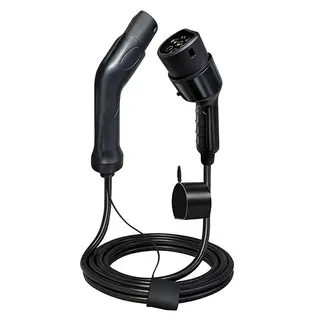In today's era of green mobility, electric vehicles (EVs) are rapidly becoming the new favorite in the transportation sector. However, the popularization of EVs cannot be achieved without a critical supporting system: electric vehicle charging stations. Behind this system, power electronics technology plays a vital role. It acts like the "heart" of the charging station, providing powerful energy and precise control for the EV charging process. This article will explore in depth the core applications of power electronics technology in EV charging stations and how it drives the development of EV charging technology.
One of the core applications of power electronics technology in EV charging stations is power conversion and control technology. EV batteries require direct current (DC) for charging, but the power grid supplies alternating current (AC). This necessitates an efficient conversion process, and power conversion and control technology is key to this process.
AC-DC converters are the core components of power conversion, with the primary task of converting AC into DC. In charging stations, AC-DC converters typically use full-bridge or half-bridge topologies. Full-bridge converters are widely applied due to their high efficiency and excellent voltage regulation performance. For example, full-bridge converters using insulated-gate bipolar transistors (IGBTs) can operate at high frequencies, significantly improving charging efficiency. In specific cases, a well-known charging station manufacturer employed an IGBT full-bridge converter, achieving more than 95% conversion efficiency, greatly reducing energy loss.
This high-efficiency conversion not only reduces energy loss during the conversion process but also improves the overall performance of the charging station. The high-frequency operation characteristic of IGBT full-bridge converters enables the station to complete a large amount of energy conversion in a short time, thus achieving fast charging. For EV users, this is a significant benefit because fast charging can greatly shorten waiting times and improve the convenience of using electric vehicles.
In addition to efficient AC-DC conversion, power factor correction (PFC) technology is also indispensable. PFC technology adjusts the input current waveform to synchronize with the input voltage waveform, thereby improving the power factor and reducing harmonic pollution. For instance, charging stations using active PFC technology can increase the power factor to above 0.99, meeting strict grid access standards.
Power factor is an important indicator for measuring the quality of electrical energy in the grid. A high power factor means that electrical energy is utilized more effectively in the grid, reducing reactive power loss. This is crucial for grid operators because a high power factor reduces grid losses and improves operational efficiency. At the same time, reducing harmonic pollution also helps protect grid equipment and extend its service life.
In charging stations, direct current–direct current (DC-DC) converters also play an important role, especially in multi-level charging systems. DC-DC converters can dynamically adjust output voltage and current according to the battery's state of charge (SOC), ensuring the safety of the charging process and battery life. For example, a certain model of charging station uses a bidirectional DC-DC converter, which not only supports fast charging but also can feed energy back to the grid when necessary, realizing bidirectional energy flow.
This bidirectional energy flow function brings more flexibility to EV usage. In certain cases, a vehicle's battery may have surplus energy, which can be fed back to the grid via a bidirectional DC-DC converter, achieving energy recycling. This not only improves energy utilization efficiency but also provides potential economic benefits to EV users.
Charging management and monitoring systems are another important application scenario of power electronics technology in charging stations. They are mainly responsible for intelligent management and real-time monitoring of the charging process, ensuring safe and efficient charging.
The charging management system primarily includes functions such as charging strategy formulation, charging process control, and charging data recording. Charging strategies dynamically adjust charging parameters based on battery type, SOC, temperature, and other factors. For example, the constant current–constant voltage (CC-CV) charging mode is used: charging first occurs at a constant current until a specific voltage is reached, then switches to constant voltage charging until full. For example, Tesla Supercharger stations use advanced charging management systems that can intelligently adjust charging power according to the vehicle's battery status, reducing charging time.
This intelligent charging management not only improves charging efficiency but also extends battery life. By dynamically adjusting charging parameters according to the actual battery status, the system can prevent overcharging and over-discharging, reducing battery wear. This is crucial for the long-term use of EVs, as the battery is one of the core components of the vehicle, directly affecting its performance and the user experience.
Real-time monitoring systems use sensors and communication technology to monitor the operating status and charging parameters of the charging station in real time, including voltage, current, and temperature. When an abnormal condition is detected, the system immediately activates protection mechanisms such as cutting off power or issuing an alert, ensuring charging safety. For instance, a certain charging station brand uses an IoT-based monitoring system to transmit charging data to the cloud platform in real time, enabling remote monitoring and management of charging stations.
This real-time monitoring function provides strong assurance for the safe operation of charging stations. By promptly detecting and handling abnormal situations, it can prevent potential safety incidents and protect both users and equipment. At the same time, IoT-based monitoring systems also enable remote management and maintenance, improving the operational efficiency of charging stations.
Data recording and analysis functions help optimize charging services. The system records detailed information for each charging session, such as charging time, energy delivered, and cost, and uses big data analysis to optimize charging station layout and operational strategies. For example, a city's charging network analyzed charging data and identified peak demand periods in certain areas, leading to an increase in the number of charging stations and an improved user experience.
By analyzing large amounts of charging data, operators can better understand user needs and usage habits, allowing them to develop more reasonable operational strategies. This not only improves the utilization efficiency of charging stations but also provides higher-quality service to users. For example, operators can add charging stations in high-demand areas or offer preferential pricing during peak periods to attract more users.
The application of power electronics technology in EV charging stations significantly improves charging efficiency and speed, which is its most direct and important advantage.
Traditional charging technology is limited by power conversion efficiency and circuit design, often resulting in long charging times and poor user experience. The introduction of power electronics technology, especially high-frequency switching power supplies and power semiconductor devices such as IGBTs and MOSFETs, greatly enhances power conversion efficiency. For instance, charging stations using high-frequency switching power supply technology can efficiently convert AC to DC with conversion efficiency exceeding 95%, far higher than the approximately 80% of traditional technology. This not only reduces energy loss but also significantly shortens charging time. Modern fast-charging stations can charge an EV to 80% capacity within 30 minutes, largely thanks to advances in power electronics technology.
This efficient charging capability is crucial for the popularization of EVs. Fast charging greatly reduces user waiting time and improves the convenience of EV use. For example, for long-distance travelers, fast charging means they can quickly replenish sufficient energy and continue their journey. This makes EVs more comparable to traditional fuel vehicles in performance, facilitating broader user acceptance.
Power electronics technology also supports multi-level power regulation and intelligent charging management, dynamically adjusting charging power based on battery status and grid load, further optimizing the charging process. For example, Tesla's Supercharger network employs advanced power electronics technology, providing a fast and efficient charging experience.
Intelligent charging management not only improves charging efficiency but also reduces the impact on the power grid. By adjusting charging power according to grid load, charging can occur during off-peak periods, avoiding additional burden on the grid during peak times. This supports stable grid operation and can reduce users' charging costs.
The application of power electronics technology in EV charging stations not only improves charging efficiency but also plays an important role in reducing energy consumption and environmental impact. Traditional charging stations, due to low conversion efficiency, have high energy loss, increasing operating costs and negatively affecting the environment. Power electronics technology effectively addresses this issue.
First, high-efficiency power conversion reduces energy loss. Modern charging stations using high-efficiency power semiconductor devices and optimized circuit design can reduce energy loss to below 5%, meaning more electrical energy is effectively utilized, reducing unnecessary energy waste. Studies show that charging stations with high-efficiency power electronics technology can save a large amount of electricity annually, equivalent to reducing tens of thousands of tons of CO₂ emissions.
Second, power electronics technology supports smart grid access and energy feedback functions. Charging stations can communicate bidirectionally with the grid, adjusting charging strategies according to grid load to avoid excessive demand during peak periods, thereby reducing overall energy consumption. Some stations also feature energy feedback, allowing surplus energy from EV batteries to flow back to the grid, further improving energy efficiency. For example, a certain charging system uses advanced power electronics technology to achieve high charging efficiency and, when necessary, feed battery energy back to the home grid, enabling energy recycling. This application reduces energy consumption, lessens environmental impact, and promotes sustainable development of the EV industry.
The application of power electronics technology in EV charging stations is an important milestone in modern transportation. It not only improves charging efficiency and speed but also provides solid technical support for the popularization and sustainable development of EVs. Through efficient power conversion, intelligent charging management, and environmentally friendly energy utilization, power electronics technology is changing the way we perceive EV charging. With continuous technological advancement, we have reason to believe that future EV charging will be more efficient, intelligent, and eco-friendly, providing stronger support for green mobility.



